I have been known to label myself as “not a museum person,” yet I rarely miss a famous one, and always enjoy them once I get there. I’ve gone out of my way to visit them, been to all the big names, and have enjoyed countless hours wandering the halls with my favorite niece Hannah. So instead, I should probably say I have a low museum tolerance. It’s a battle between my eyes and my feet to see which one will cry “uncle” first.
Lisbon has a hodgepodge of museums. Not only are there the usual suspects of old masters and contemporary art, but there are also more obscure options. For example, there is the Museum of Beer, the Museum of Water, the Money Museum, Museum of Marionettes (puppets,) the Tile Museum (azuelos) and the Museum of Fado, Portugal’s traditional music, just to name a few. So many museums, so little time reserved at my accommodation. I have three days to allocate toward museum exploration.
While the quirkiness of many of these museums appeals to me, realistically, I am really only good for one museum per day. By the time I find the location, read up on what is on offer, and do the museum justice, I am pretty much out of mental and physical fuel. I find I have to consciously pace myself so as not to delve too deeply in the first few exhibits, leaving myself short on energy for the grand finale. So I figure I will allocate one museum per day over three days.
Museu Nacional do Azulejo
I have been extraordinarily enchanted with the beautifully patterned tiles that seem to cover every façade both inside and out here in Portugal. It is something that has taken me by surprise, and I wanted to know more. Why are they so prolific here?
First of all, I learn the Portuguese don’t call them “tiles,” but rather “azuelos,” from the Arabic word meaning “small polished stone.” The patterned tiles remind me of the beautiful blue tiled mosques I saw in Iran. I guess it stands to reason, since the Iberian Peninsula is so “moored” in its Moorish roots. So I was curious to learn more about how they evolved to play such a prominent role in the Catholic churches here.
The museum is set in Madre de Deus Convent, founded in 1509, so the building is almost as beautiful as the displays themselves. Inside the convent is a baroque chapel showcasing tiles from the 18th century, like a museum inside a museum.
While I had hoped to learn more about the making of the tiles (materials used, type of paints, etc.) I found the museum to be more like an art gallery. Still worthy of Museum Choice No. 1.
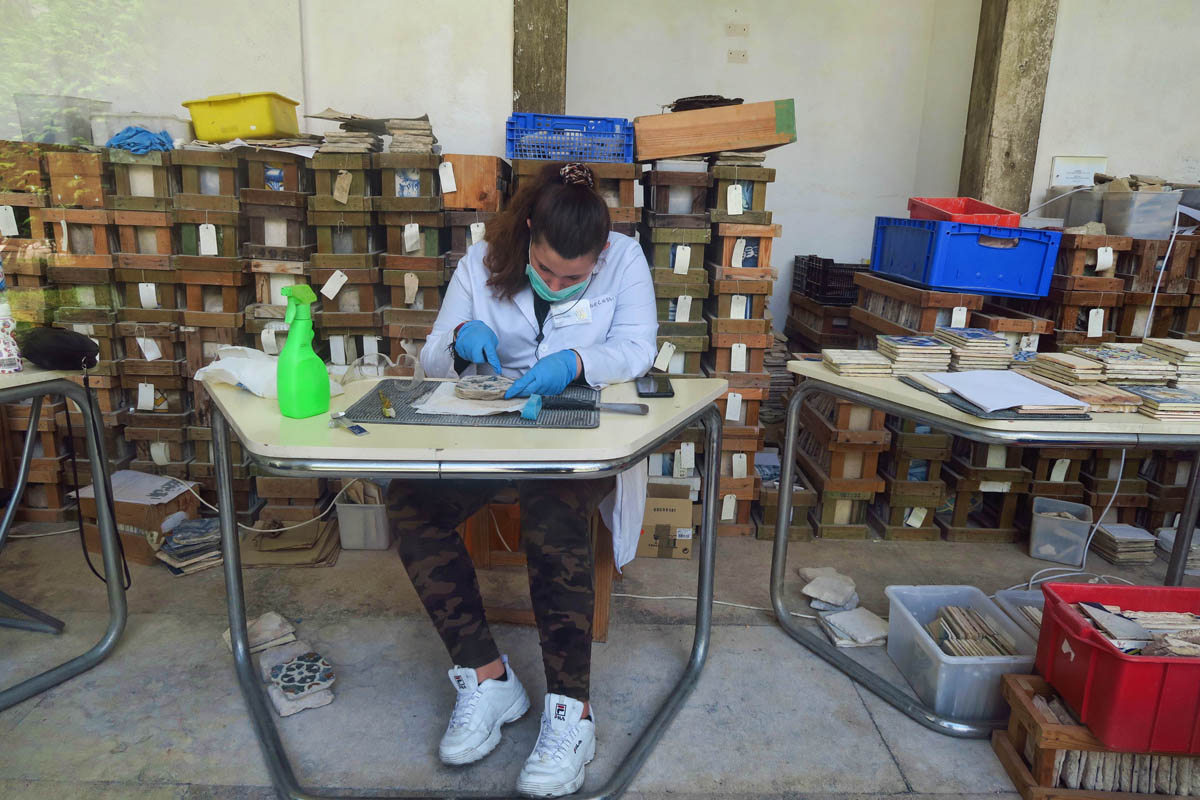
The museum occupies all three floors of the old convent. This area is where restoration is taking place, and the walls on both sides of her are stacked to the ceiling with boxes of tiles.
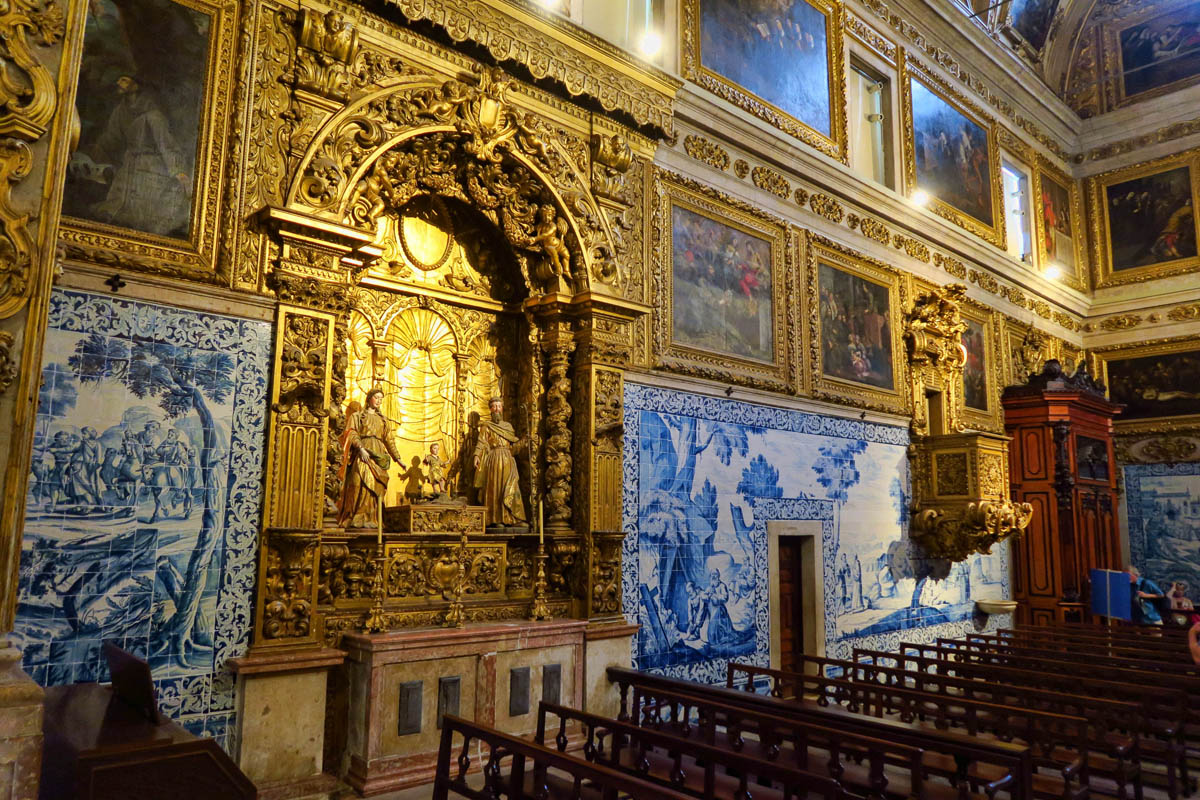
Inside the convent is Leonor’s Chapel, named for the convent’s founder, Queen D. Leonor, sister of Manuel I and widow of King João II
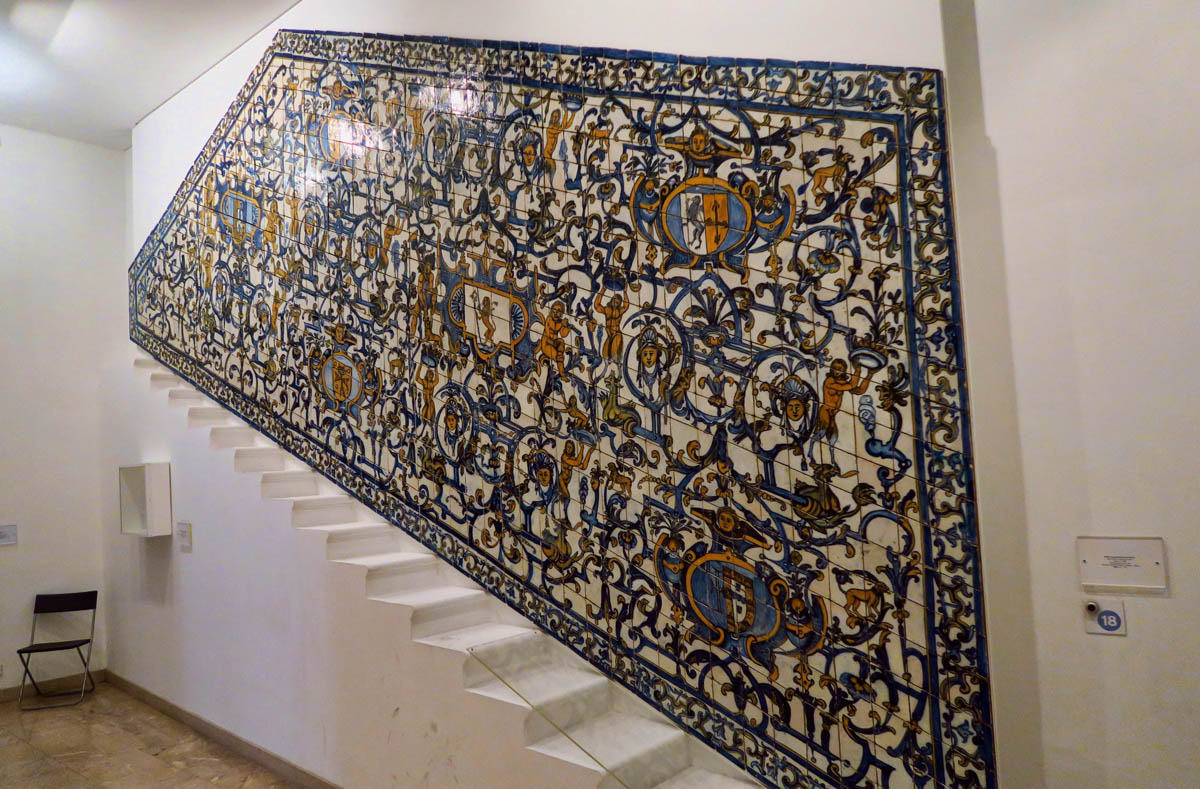
The Portuguese adopted the Moorish tradition of horror vacui (‘fear of empty spaces’) and covered the walls completely with azulejos. This, a staircase ashlar dating from 1650.
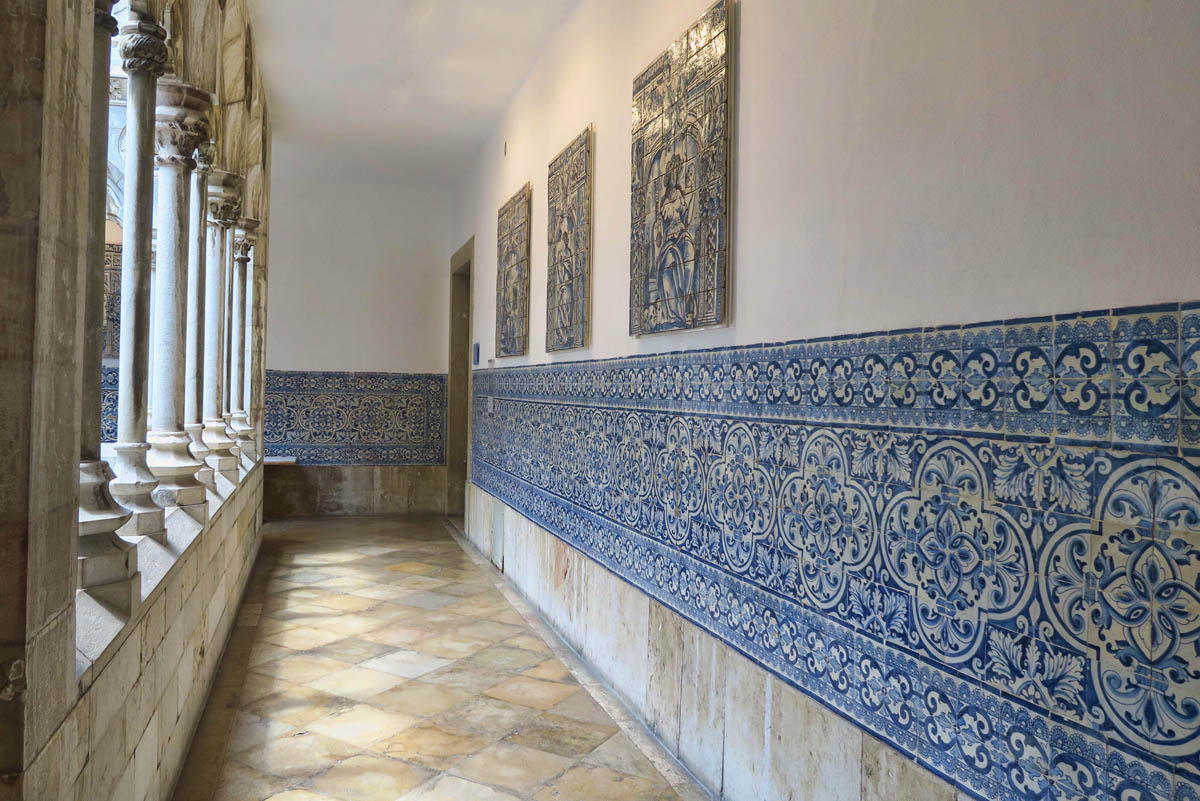
Islam prohibits idolatry, which has been interpreted to mean human and animal forms are forbidden in art. For this reason, the earliest Azuelos of Moorish influence were floral or geometric in design.
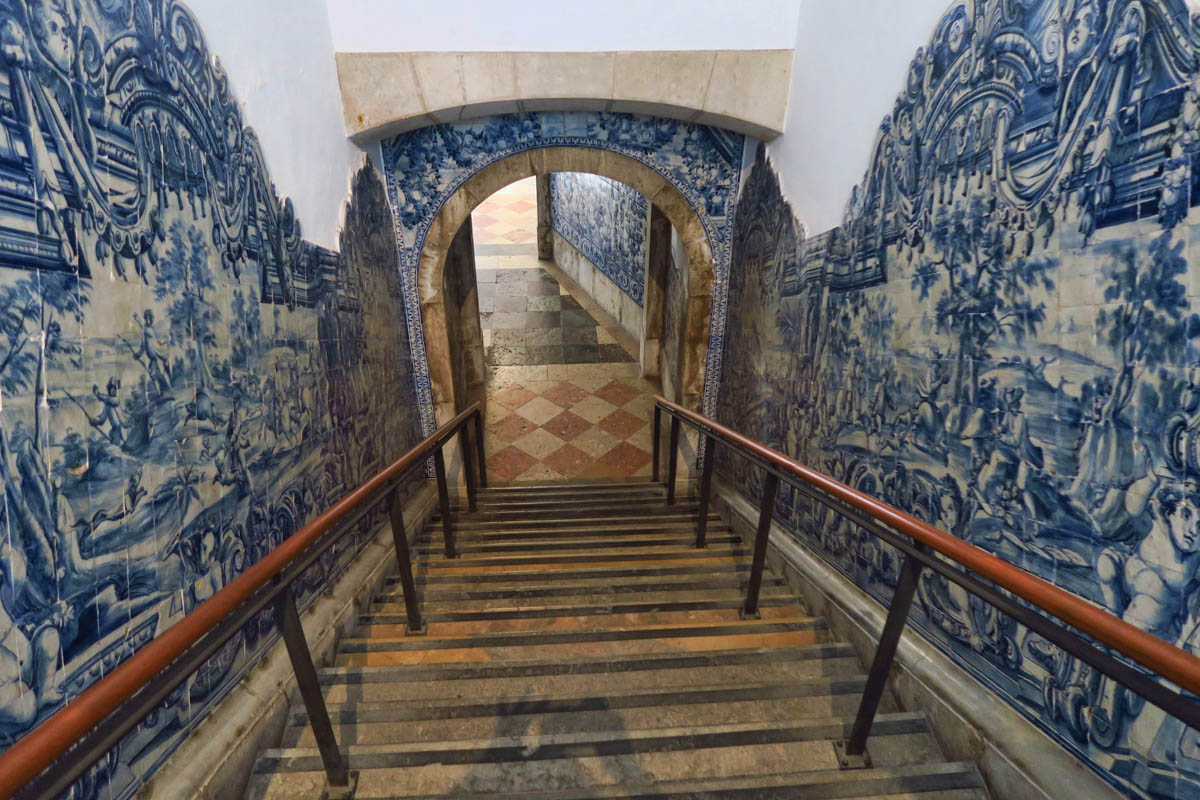
By 16th century, European motif incorporated human and animal forms. The blue and white influence came from Chinese porcelain that was first brought to Europe by the Portuguese. In the 18th century, Masters from the Netherlands were commissioned, who brought in baroque aesthetics at the height of production referred to as the “Masters Cycle.” Eventually, the art evolved into storytelling with hunting scenes, courting scenes, and religious narrative.
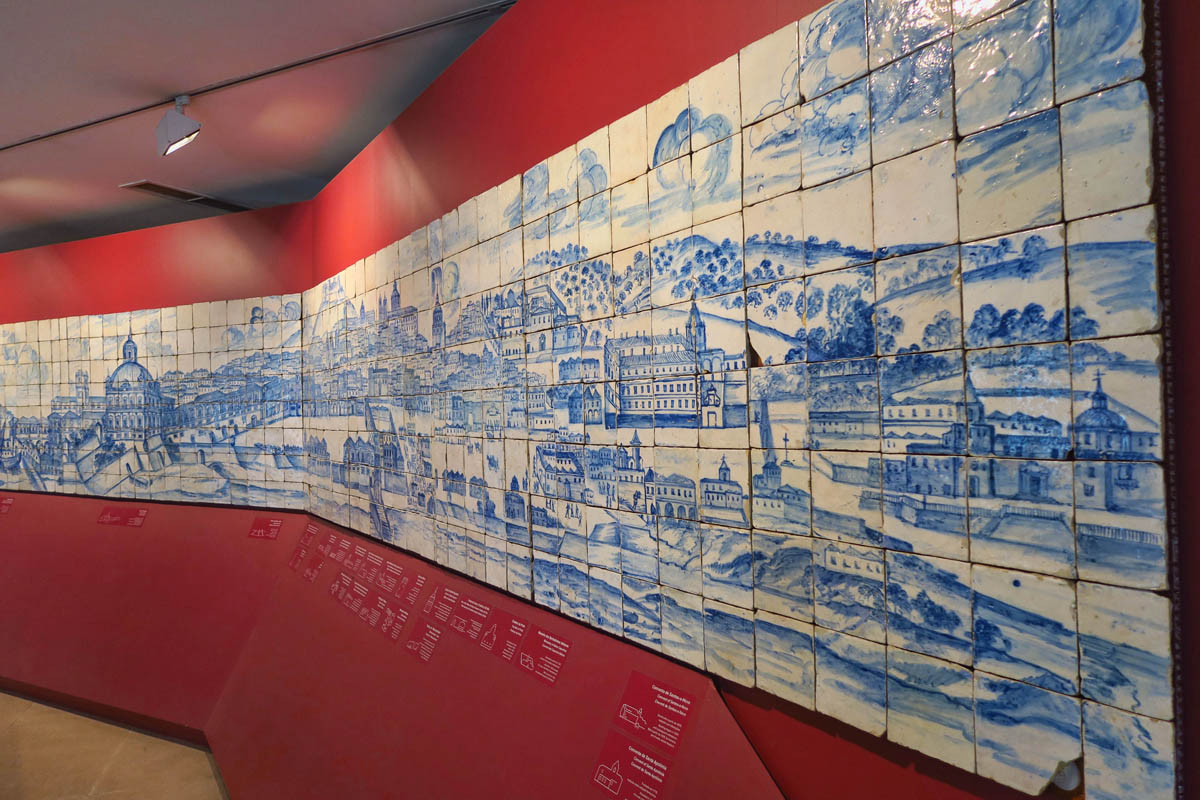
This azuelo display called “The Great Panorama of Lisbon” is over 100 ft long, depicting Lisbon before the 1755 earthquake.
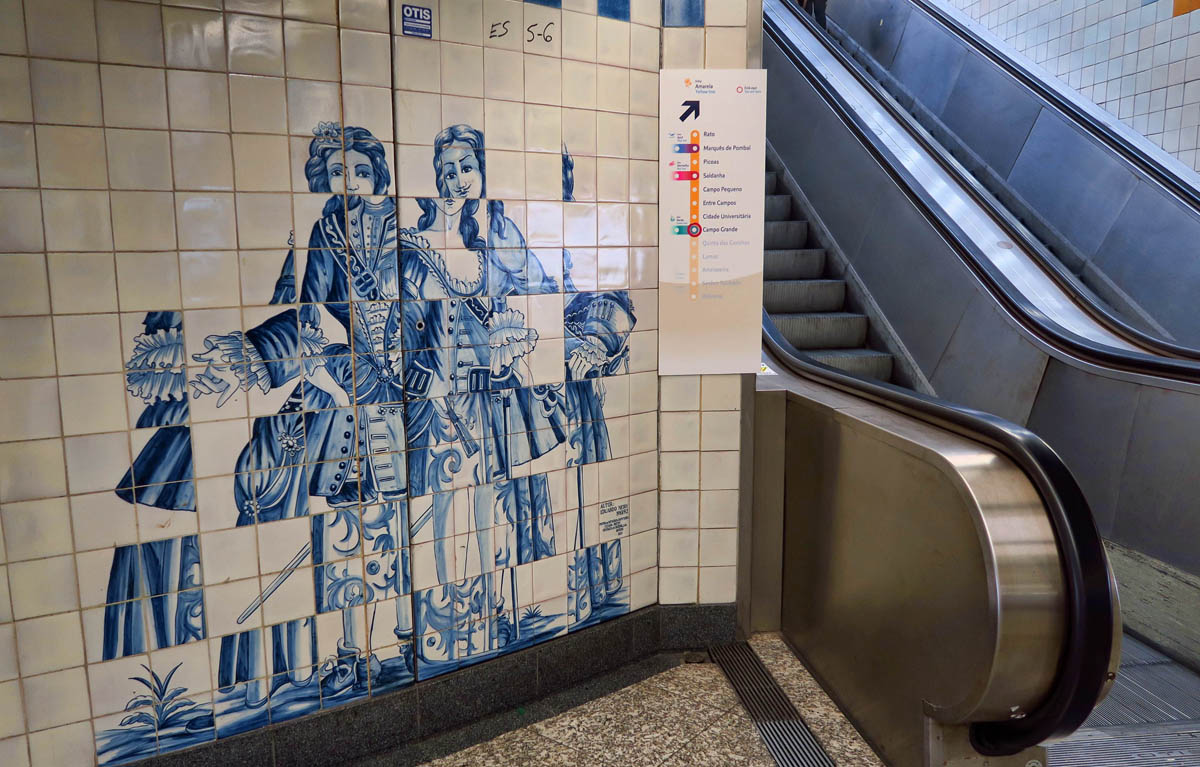
Azuelos are everywhere! Lisbon loves its subway art, and as one who spent 10 years of my life riding the NYC subway, I love it too!
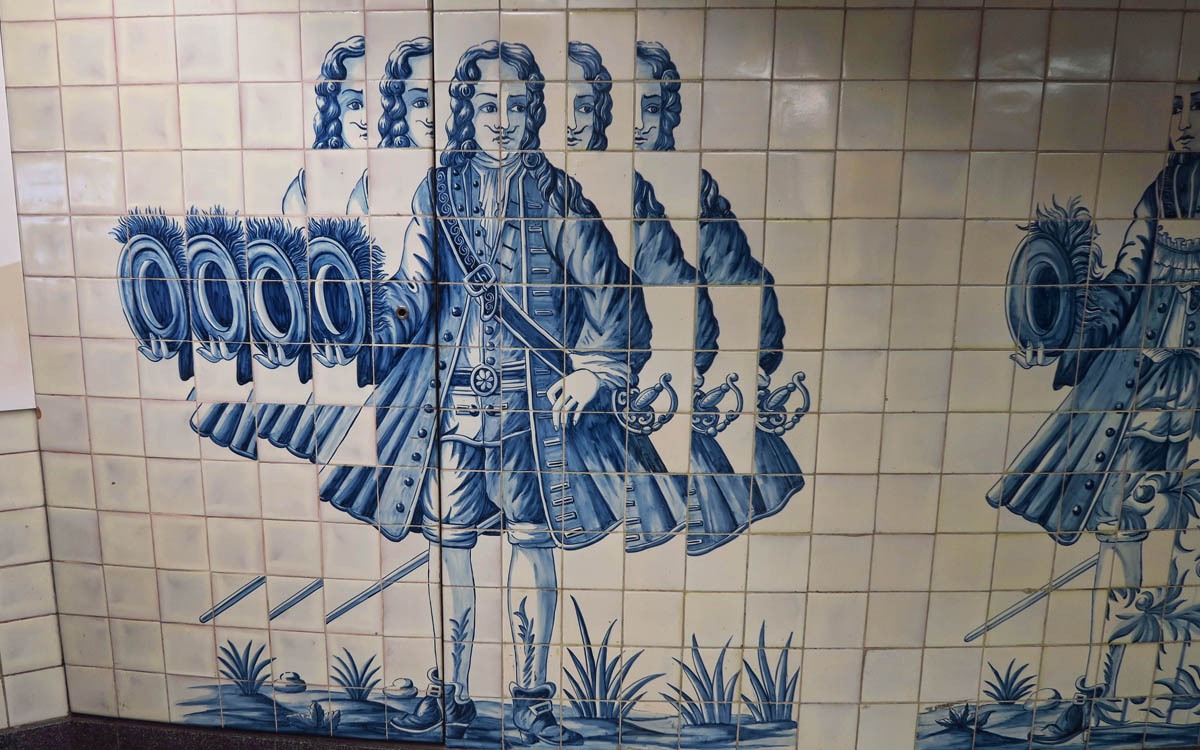
Every station has a different tiled theme, but of course, I loved this more abstract and humorous version of the azuelo.
Palácio Nacional de Queluz, or the National Palace of Queluz
Does a palace qualify as a museum? It is in a way, a life-sized museum. It was my growing appreciation of azuelos that brought me to the Palace. In doing my research about azuelos, I learned that the National Palace of Queluz has an entire canal lined in blue and white tiles where the royal family went boating. This, I had to see.
About half an hour outside of Lisbon, easily reached by the train from the Rossio Station (right outside my hostel door) in the very nondescript suburbs of Queluz is the resplendent national palace inspired by France’s Versailles.
Built in 1747, it was initially conceived as a summer residence. They lived here permanently from 1794 until 1807 when they were forced to flee to the then Portuguese colony of Brazil following the French invasion. They literally left the day before Napolean’s troops landed in Lisbon.
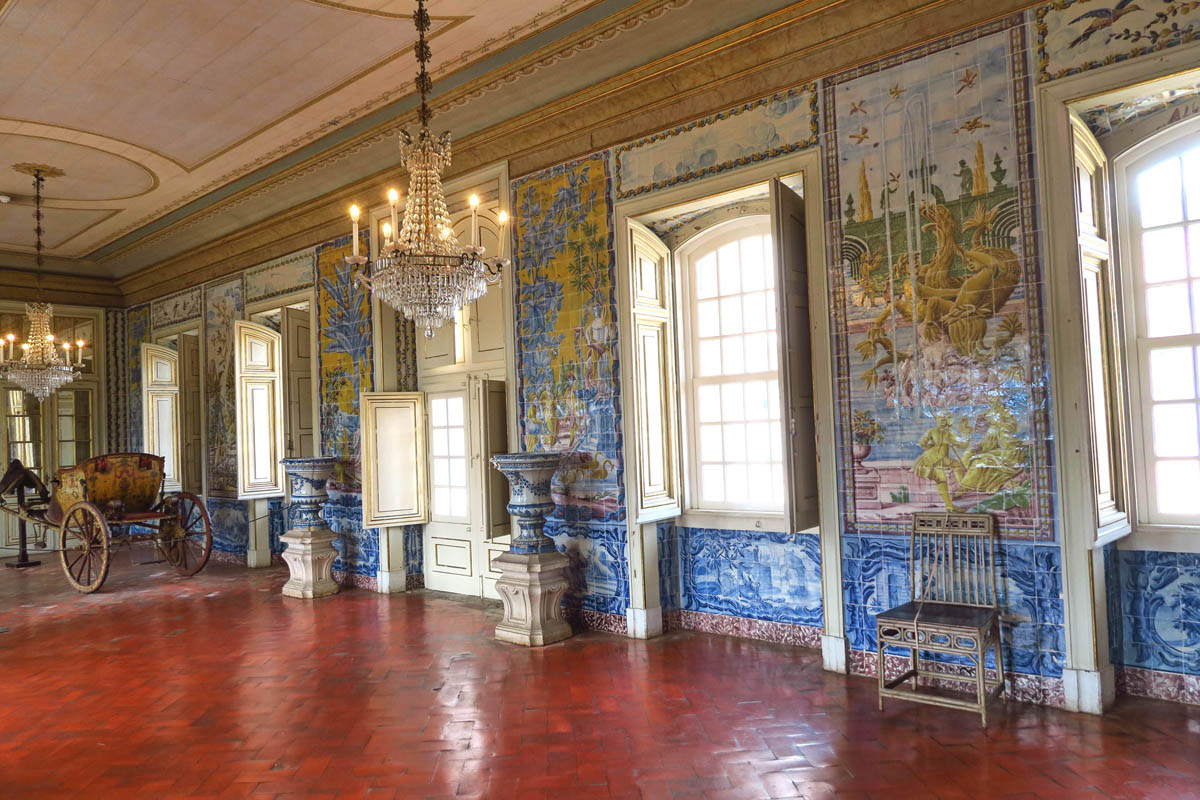
Multicolored azuelo panels date from 1784, and depict the Four Seasons, along with scenes from classical mythology.
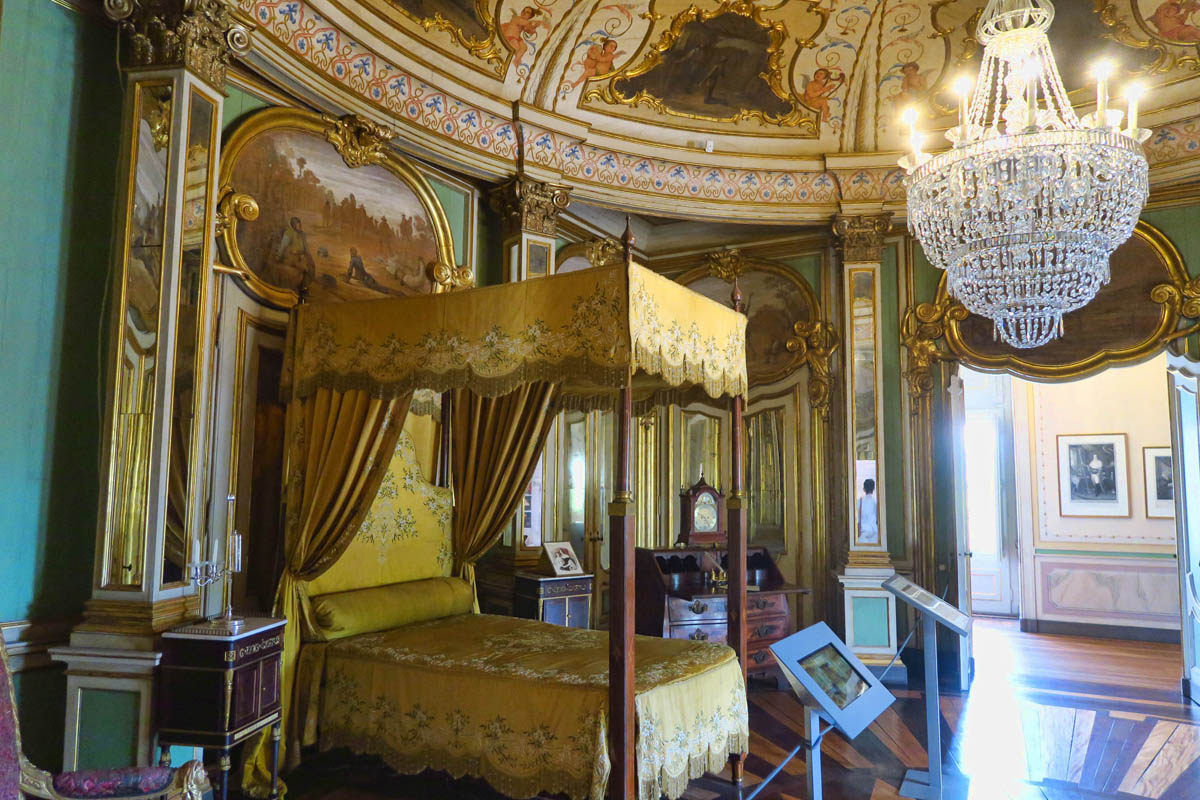
The Kings Bedroom — Pedro IV (1798-1834), the first Emperor of Brazil and the first Portuguese constitutional monarch died here in the same room where he had been born 36 years earlier. (While the room is square, the domed ceiling and circular inlay motif in floor give the impression it is oval.)
Museu de Marinha, Maritime Museum
One of the things which most endears Portugal to me is its nautical ambiance, and with over 1,000 miles of coastline, its heavy maritime influence should come as no surprise.
Being here in Portugal, I am surrounded by reminders of “The Age of Discovery,” from the early 15th century into the early 17th century, when European ships traveled around the world in search of new trading routes and partners. The Portuguese Empire led the charge during this time of discovery with young Henry the Navigator and Vasco da Gama, among others, exploring the west coast of Africa all the way to Cape Town. (It’s interesting that you see little mention of Ferdinand Magellan, Portuguese sailor who was the first to circumnavigate the globe. But he did so under the Spanish flag, therefore Portugal considers him somewhat of a traitor.)
Portugal and Spain were the dominant leaders of the Age of Discovery. Through the Treaty of Tordesillas the two countries agreed to divide up the New World, with Spain getting most of the Americas while Portugal got Brazil, India, and Asia. Interesting, considering the scope of Portugal’s dominion today.
I have long been fascinated by these navigators and cartographers on how they managed to sail around the globe using rudimentary tools in rickety boats, to risk venturing into the dark and perilous sea, all for the sake of exploration. Oh sure, there were trade routes at stake offering rich rewards, but equally rewarding was the notoriety of claim, as well as the adventure itself. Not only the gold, but the glory…a curiosity that drove these early explorers to try and try again, against all odds, to press on just to see what lies over the horizon.
While I have done some reading about Captain Cook (very humorous book by the late Tony Horowitz, Blue Latitudes) I remember very little from my World history about the Portuguese explorers. So being here in Lisbon, the Maritime Museum piqued my interest.
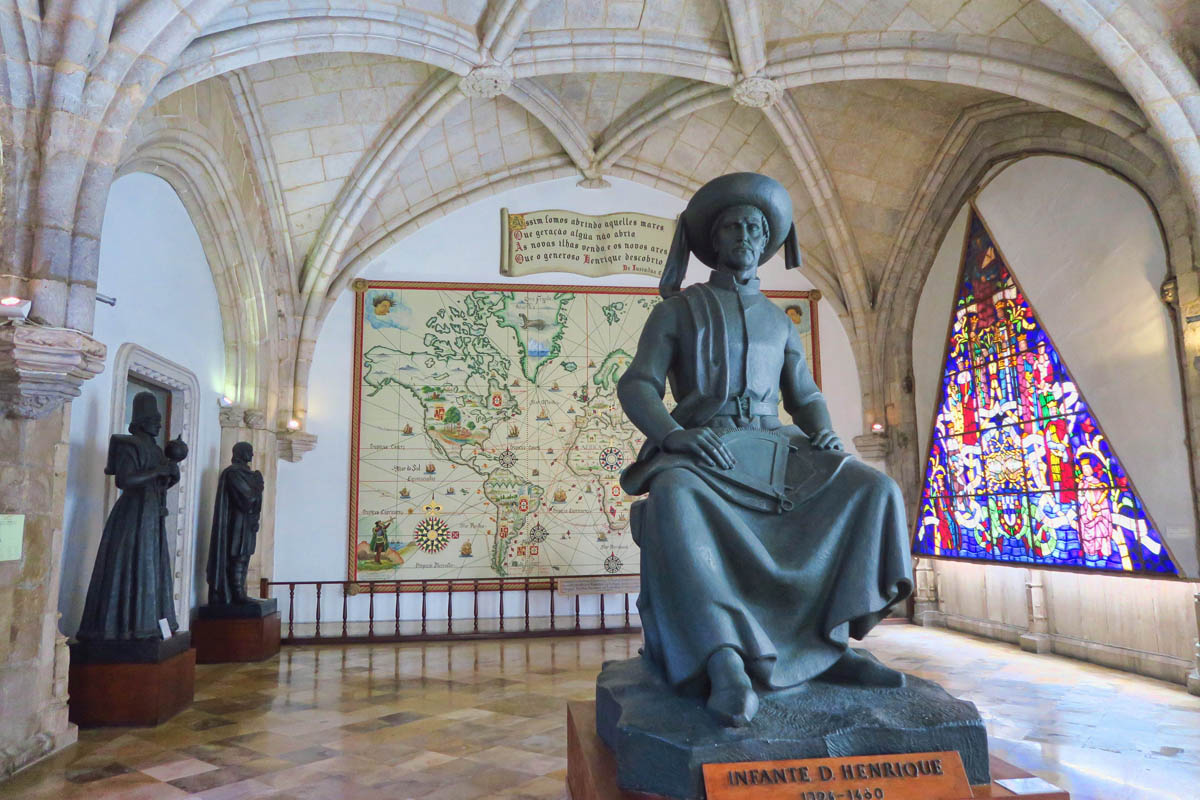
Prince Henry the Navigator, Portuguese explorer born in 1394, credited with starting maritime expansion and exploration of the Atlantic.

Miniature model of the Caravel, ship developed by the Portuguese. Its advantage over the older ships was its triangular sail, which could be trimmed to allow the ship to navigate either cross or head winds.

The Astrolabe, used primarily to make astronomical measurements of celestial bodies to aid in navigation. Developed in the late 15th century, it was as important for navigation as the GPS in our times.




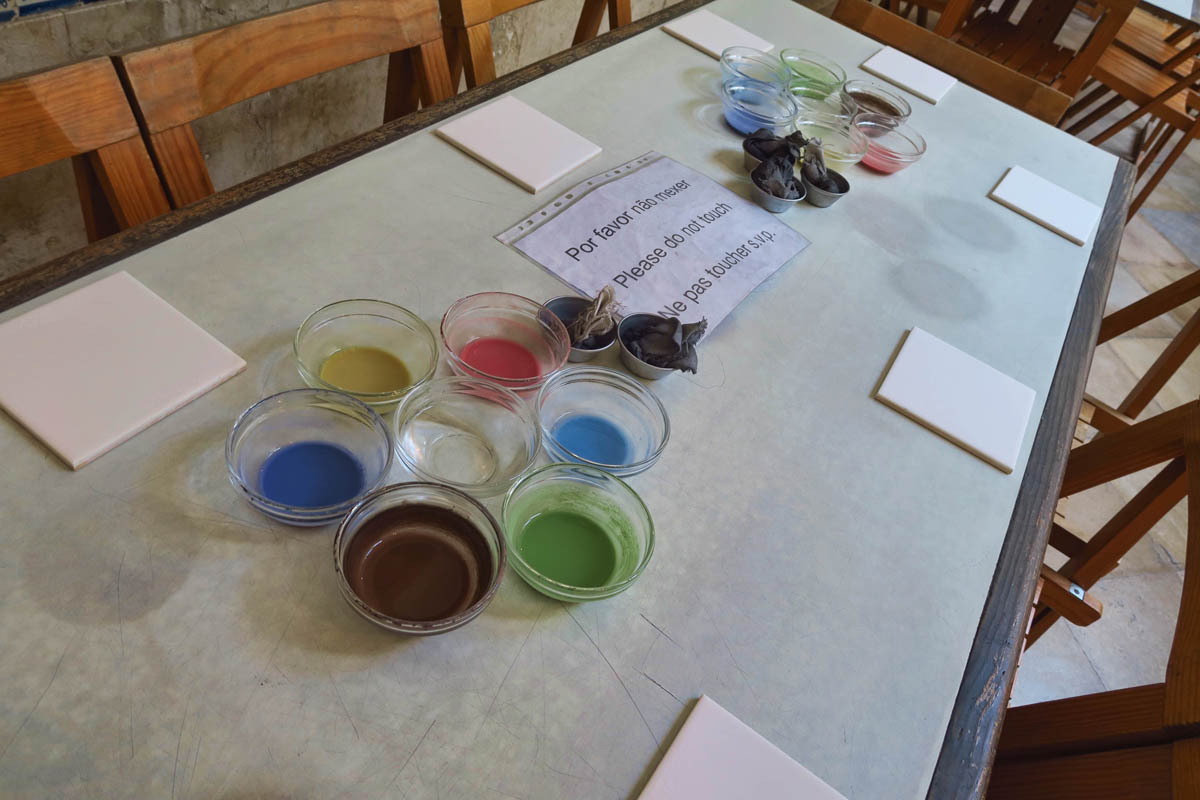
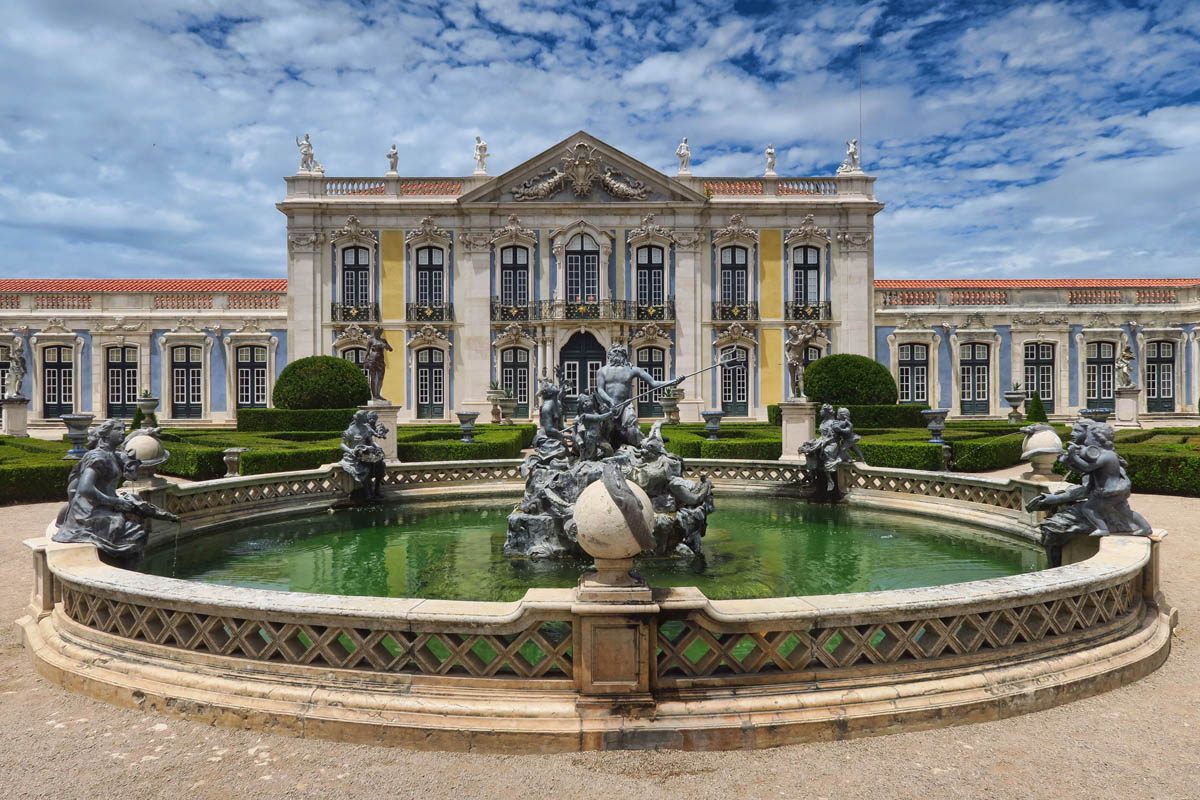



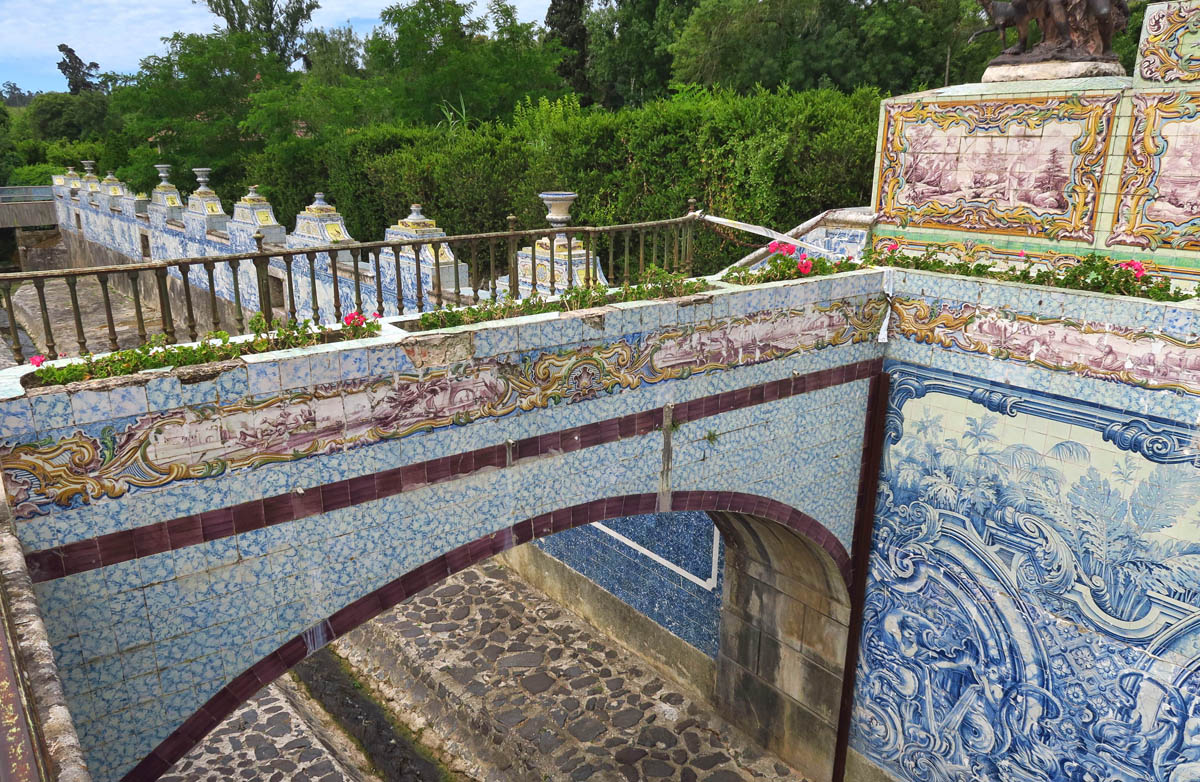
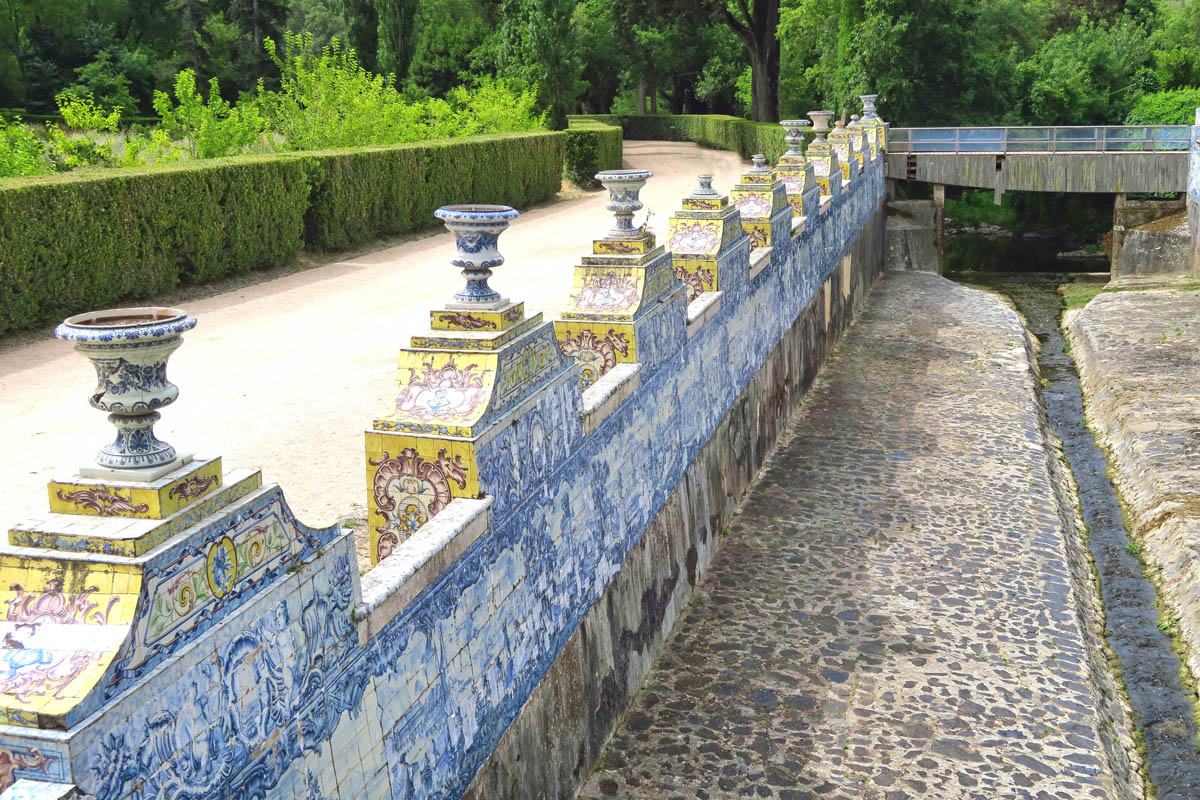
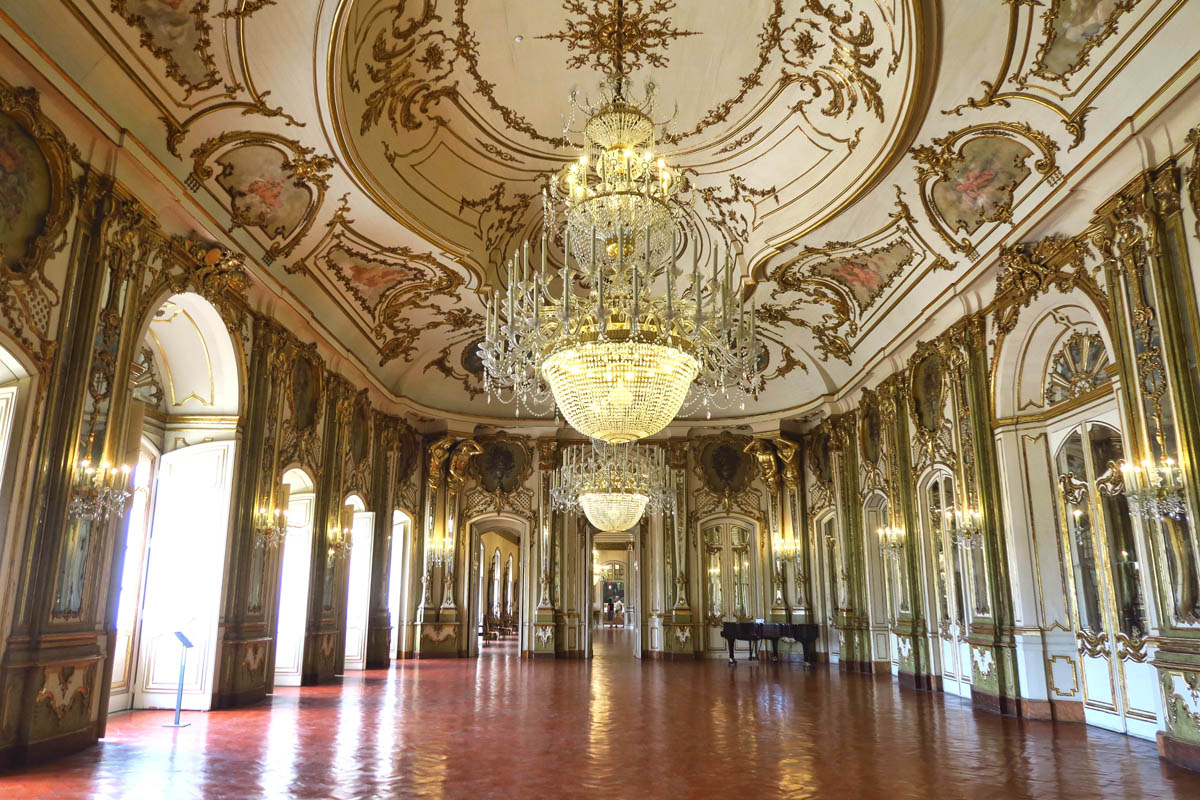

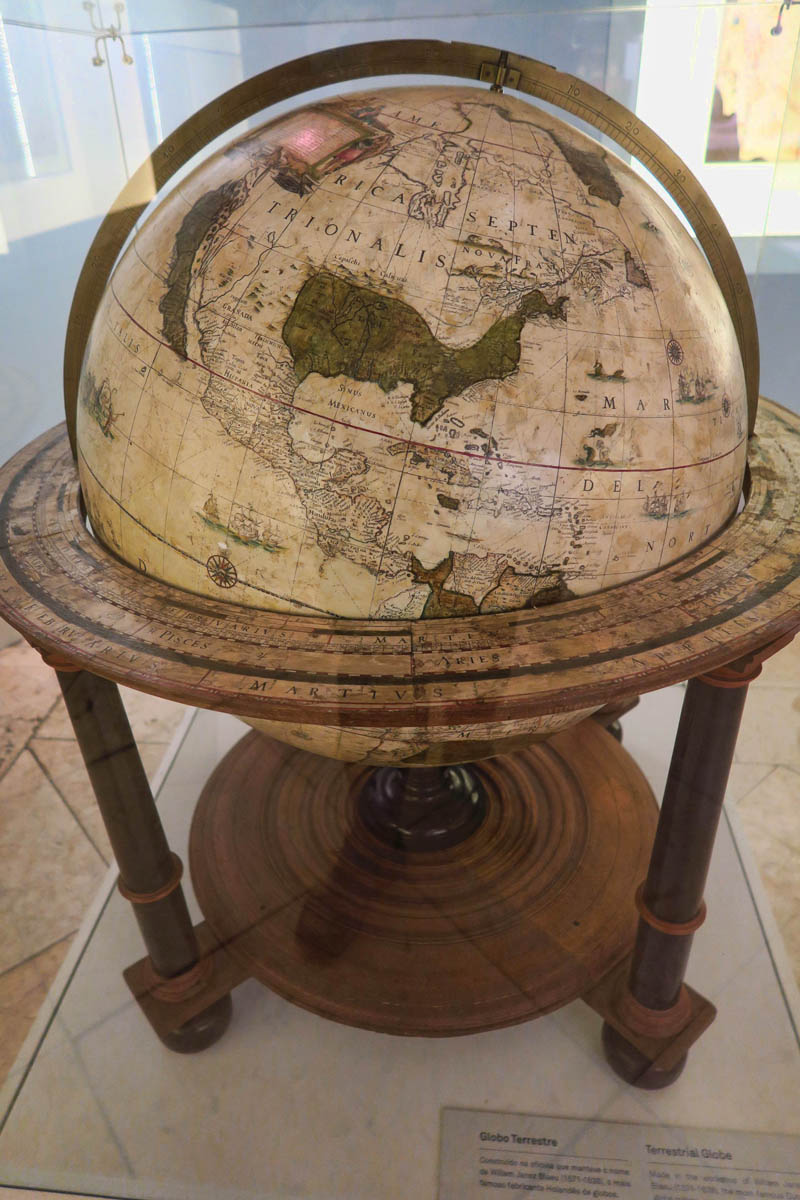
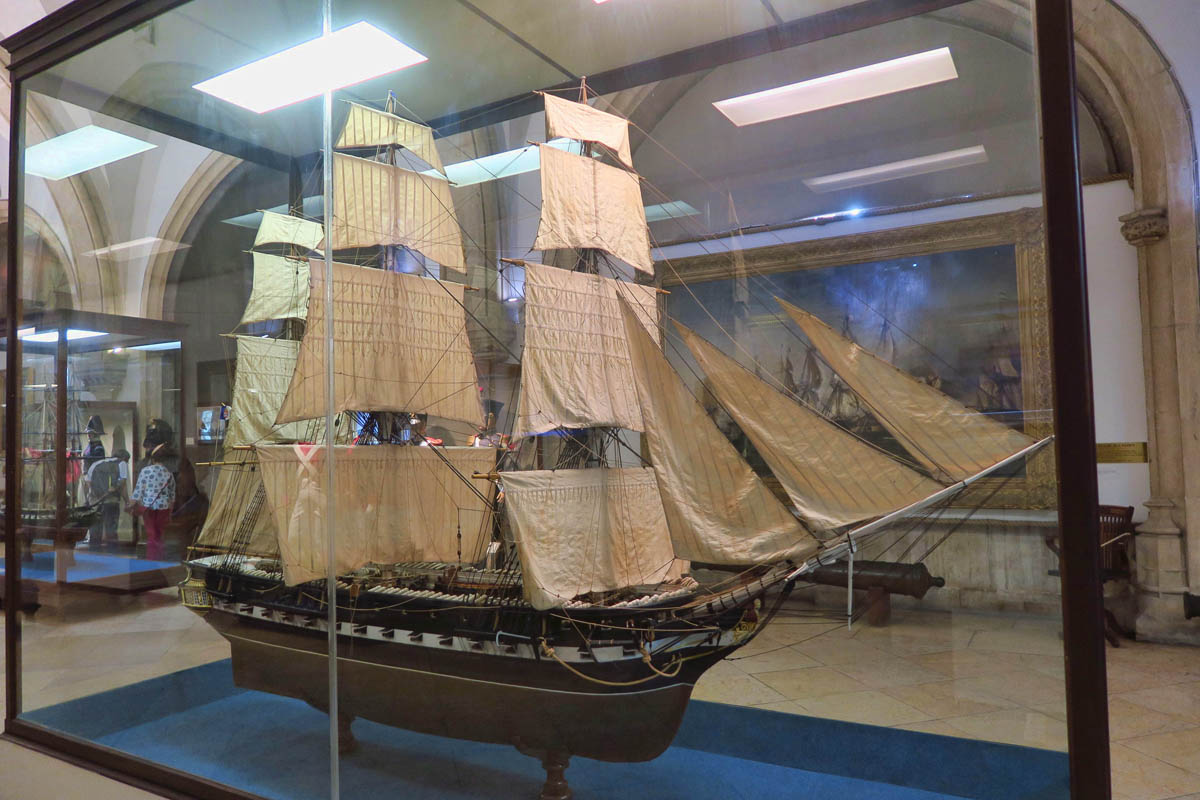

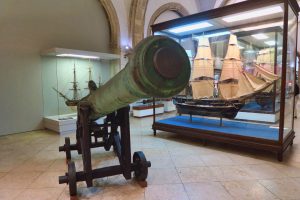

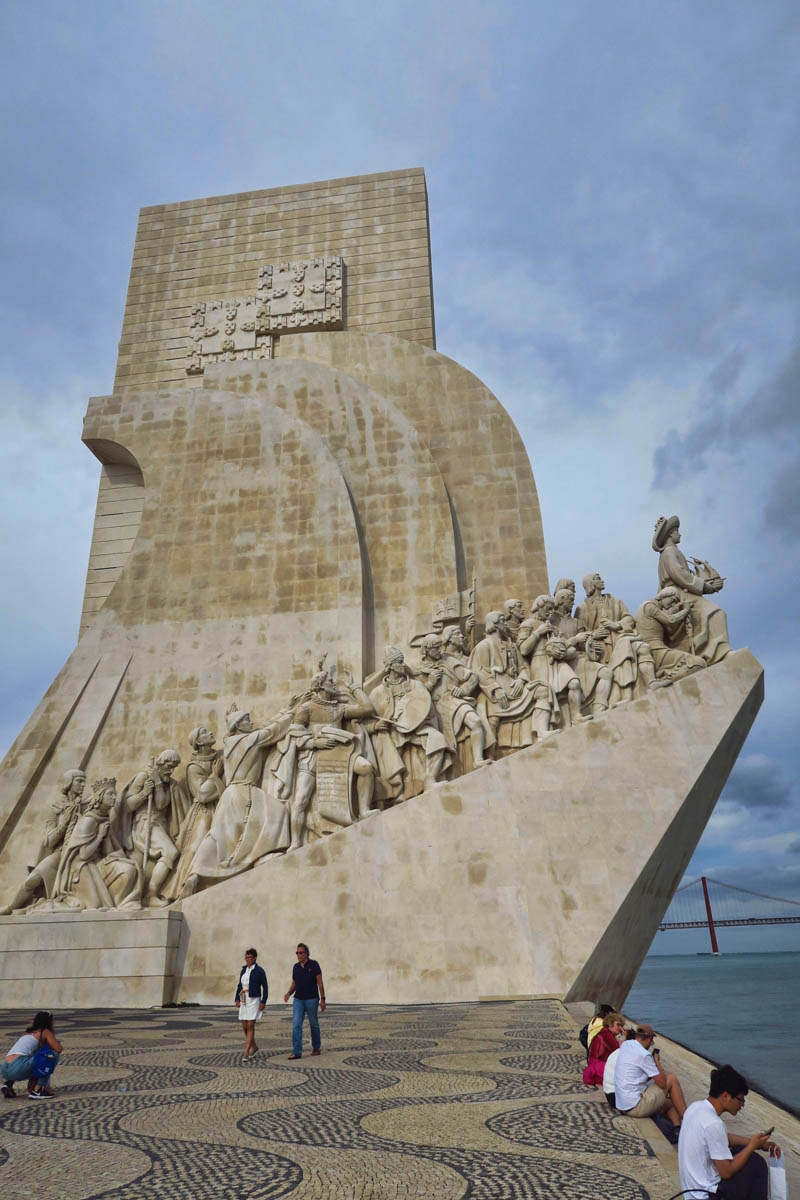
Such wonderful exploration days! I clicked on “weather” for Lisbon because pleasant weather would be icing on this cake, and weather looks wonderful too, barely reaching 80 degrees during the day, and mid-60s at night?? While Paris suffers a heat wave, Lisbon is untouched by it?
Hi, Terri. Poor blog is lagging behind, I am in Porto now, where the forecast is not supposed to go above 75 while I am here. Yes, I feel very fortunate to have dodged the European heat wave! Hope you are finding some cool shade as well. Thanks for sticking with me.
Very cool, what is interesting about the museums down there is that they have such a longer history compared to ours…..
It seems your beautiful and informative blog posts always leaves me with subtle mixed emotions. I find such beauty through your eyes and prose…stirring up a longing to do as you do, see as you see. Go where you go. My reality is such that I’ll probably never get to Lisbon…but how sweet is it that I get to be there, here.
“Don’t tell me that the moon is shining; show me the glint of light on broken glass.” ~ ~ Anton Chekhov
Rhonda, this comment made my world do a little wobble. Thank you.
I read everything, including comments. I do not miss any of your post during the last 5 Years Great photos and unusual style of writing
Please keep going .
Thank you, Alex, for the very nice compliment. You made my day!